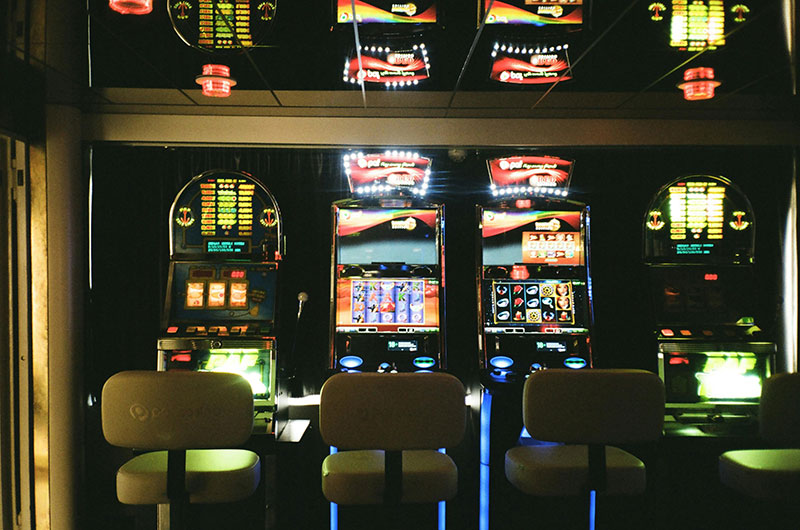There’s a strange kind of romance in chasing reels. You sit down with no map, no sword, no strategy guide. Just your balance and the spin button. It’s the gaming equivalent of tossing a message in a bottle and waiting for Poseidon to write back. Some players chase jackpots like moths toward porch lights. Others stay small, whispering their luck across dozens of spins, hoping for something quiet and kind to fall their way.
But underneath all the lights and chimes, there’s a heartbeat—something built into the very math of the machine. That’s where volatility lives. Whether you’re sitting at a slot in a smoky backroom or tapping away at digital reels on your phone, volatility is the thing deciding what kind of ride you’re really in for. And in the world of slot games—those colorful, spinning titles where you line up symbols for payouts—volatility is everything. These games are simple at the surface: pick your stake, spin the reels, and hope symbols line up from left to right. But beneath the simplicity? Strategy, luck, and the volatility sweet spot.
What Is Slot Volatility, Anyway?
Let’s strip it down. Slot volatility, sometimes called variance, is a measure of how often—and how much—a slot game is likely to pay out over time.
- Low volatility slots = frequent wins, but smaller amounts.
- High volatility slots = rare wins, but when they land, they hit harder.
Think of it like dating. Low volatility is the reliable, show-up-on-time partner who texts back and brings you soup when you’re sick. High volatility is the rockstar you see once a month, who crashes through your life with wild energy and disappears before brunch.
Neither is better. It depends on what kind of night you’re trying to have.
Picking a Slot Is Like Choosing a Movie
Imagine watching Ocean’s Eleven vs. There Will Be Blood. One gives you charm, fast pacing, lots of action. The other builds tension, slow burns, and eventually pays off in a big, dramatic way. Picking a slot works the same way. Do you want steady entertainment or the possibility of one huge dramatic twist?
Low volatility slots are built for those who want more frequent excitement—tiny rewards that keep you in the game longer. Perfect for casual play, tighter budgets, or if you just like the rhythm of spinning and winning regularly, even if the wins are small.
High volatility slots, on the other hand, can go cold for long stretches. But then, boom. Bonus round. Mega symbols. A string of wilds and multipliers that hits like an avalanche. These are the ones you’ll hear players talk about in forums and over beers. The ones that could turn $10 into $1,000—if the stars align.
Know Your Bankroll, Know Your Volatility
This is where things get practical. If you’re sitting on a small budget—say, $20 or less—you might not want to dive into a high-volatility slot. You could burn through your bankroll before you even see a bonus symbol. Low volatility slots give you more playtime, more spins, and more chances to test your rhythm.
But if you’ve got room to roam and like the adrenaline? High-volatility games can deliver those one-in-a-hundred moments where everything lines up and suddenly you’re staring at a win that feels like it stepped out of a movie montage.
The real magic happens when you balance your risk. Test both worlds. Mix low and high. Know when to play safe and when to let the reels ride wild.
The Culture Behind the Spin
Slot games are more than just math and symbols. They’ve woven themselves into the broader culture of gambling and entertainment. You see slot-inspired mini games in mobile apps, crash mechanics in other betting formats, and even slot-like bonus systems in non-gambling titles. They’re everywhere because they’re simple, thrilling, and easy to pick up.
But here’s the kicker: most players never think about volatility. They just spin and hope. The ones who do—who learn to read the “feel” of a game, to sense whether it’s a marathon or a sprint—tend to have more fun, fewer disappointments, and longer, more meaningful sessions.
Even user reviews reflect this. Read enough of them and you’ll see patterns. “This slot never pays out.” “Too volatile for my taste.” “Great for casual play.” They’re not just talking about luck—they’re talking about volatility without using the word.
Keep It Fun, Keep It Honest
This isn’t about cracking some secret code or beating the machine. Slots—high or low volatility—aren’t puzzles you can solve. They’re games of chance. That’s their charm. What you can do is understand the terrain. Know what kind of ride you’ve signed up for.
Want to pass the time with lots of little wins? Low volatility’s your friend.
Craving the thrill of a long shot? Go high, but budget for it.
And if a slot gives you a bonus round after 60 dry spins, don’t think the machine “owes” you another one soon. Volatility doesn’t care about your mood. It only cares about probability.
Finding Your Sweet Spot
The smartest players aren’t always the ones chasing jackpots or playing the biggest stakes. They’re the ones who know what they’re looking for and match their playstyle to it. They try a few games, experiment with volatility, and figure out what keeps them entertained without stressing their wallet.
Think of volatility as the genre of the story you’re about to play through. Drama, comedy, thriller, slow-burn suspense. You’re the main character. The slot is the plot device. The outcome? Unknown.
So pick your story. Keep your spins light. Learn the rhythm. And whether you’re in it for the little victories or the rare, wild wins, remember: every reel tells a different tale. It’s just up to you how you want it to unfold.






